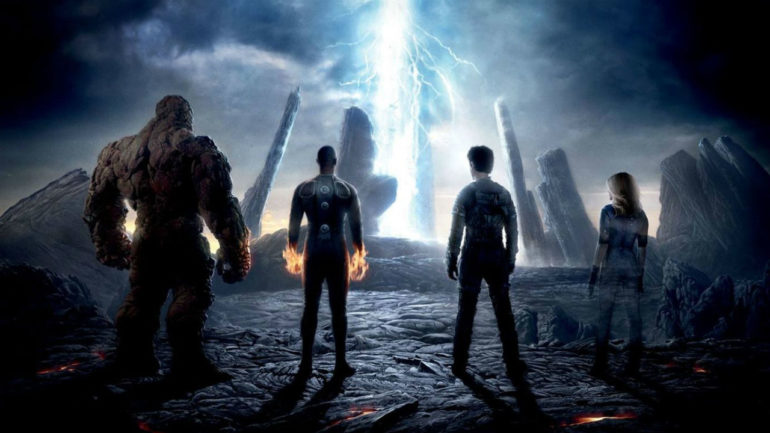Here it comes; the latest big budget disaster we’ve all been salivating to see.”
As undiluted as that slice of schadenfreude might be, the bad buzz behind Fantastic Four has been deafening. Sources say that 20th Century Fox couldn’t figure out how to market writer-director Josh Trank’s vision. Memo to studio executives: when you’re attempting to rejig a less-than-beloved series of films (OK, there were two, but it felt like more), don’t hand $120 million over to a director with one film to his name to adapt a script you think is too ‘out-there’. Except, riskiness is not the problem with the finished product. The only risk in Fantastic Four is that the audience might give up before anything vaguely interesting happens.
Though one might rail against a perceived contempt for storytelling in Hollywood, their constant rebooting and reloading of franchises at least suggests a desire to preserve a classic ‘beginning, middle and end’ structure. Well, either that or a need to purge the sins of the previous installments from cinemagoer’s minds. Tim Story’s previous Fantastic Four films only proved Chris Evans was meant to be a superhero and Jessica Alba can’t really act. Still, the fact of the matter is: these films exist. Their origin story has been told before; do we really need to go through all this again? As far as Marvel movies go, the best of the origin tales was probably Thor. It dared to say: “A magical alien Viking arrives on Earth to be a superhero; any questions?” Daft as it sounds, Branagh’s film trusted audiences enough to go along with the daftness, which they did. A little of the same outlandishness might have served Trank’s film well.
Trank’s first feature Chronicle may hint at the more character-driven take he aimed for with Fantastic Four, but those aims do not shine through in the finished product. The central foursome are distinct individuals, but the script reduces them to stock types. The film opens with two children, Reed Richards and his school friend Ben Grimm, testing Reed’s homemade teleportation device. As is the wont of such films, these boys are growing up in a blue-collar New York suburb, so this potentially world-changing development goes unnoticed by all around. Why? Reasons, we are left to suppose.
Cut to seven years later (Haven’t screenwriters learned not to use this lazy cheat? It robs the film of all urgency). The teleportation thingy has managed to avoid detection, so the now-teen Richards (Miles Teller) and Grimm (Jamie Bell) are presenting it as a science fair project. Luck is clearly on the boys’ side; the CIA haven’t shown up to confiscate their project, and physicist Dr. Storm (Reg E. Cathey) has come to the fair, having worked on a similar project to Richards’ for years. One scholarship offer and romance-establishing meeting with Storm’s daughter Sue (Kate Mara) later, and Richards is off to research stuff. Cue another 45 minutes of vaguely scientific waffle and mild sparring with fellow boffin/pre-ordained villain Victor von Doom (Toby Kebbell). There’s little that happens in the first half of Fantastic Four that doesn’t feel like it’s going through the motions until good science goes bad and tragedy ensues.
The first half also introduces us to Sue’s brother Johnny (Michael B. Jordan), a thrill-seeking non-scientist, because nerds don’t do adrenaline rushes! For all Trank’s sincerity in bringing this superhero team to the big screen, the script paints in broad strokes. Teller wears glasses, ergo he’s a nerd. Mara plays ‘female nerd with eclectic music tastes’ (Portishead for Christmas No. 1!) and Jordan is the nominal wisecracker and jock. The actors come with a certain amount of charm, but that counts for little when the script cares so little for the characters, some of them disappear for scenes at a time. Up to the halfway point, Jamie Bell’s screentime is less than five minutes, and he’s a co-lead. Through a mix of underdevelopment and indifference, emotional investment is thoroughly squandered, and the film lurches along with a dull thud.
All this ‘development’ is played out without a hint of irony, which is a gutsy move considering the film deals with inter-dimensional travel. Richards’ machine is revealed to be a portal to a primordial Earth twin, where the ground pulses with energy. Cue one drunken (and badly-CG’d) visit to this Green Lantern-alike land, leave to simmer for one setpiece, and leave to cool. If the mid-00’s Fantastic Four films were too playful, this redux is too dark for its own good. If Chronicle trated its heroes’ new-found powers as a mixed blessing, here they’re just a curse. After the interdimensional incident, Fantastic Four takes a lurch towards Cronenbergian ick, as our central quartet are surrounded by soldiers in biohazard suits, and slowly discover the horrible truth. These scenes threaten a pathos that might have impress if the characterizations has been nailed down. It doesn’t help that the special effects has scarcely improved since the last Fantastic Four, or that Bell is completely lost within the now fully-CG Thing.
All of Fantastic Four’s problems are galvanized in the second half. Another ‘one year later’ intertitle kills the pace, attempts at emotive moping about these new powers/afflictions are lost on characters we haven’t fully established, and the inevitable face-off with the newly-rechristened Dr. Doom feels shoehorned in to create a setpiece the film hasn’t earned. A potentially-threatening villain is treated as a mere signpost on the heroes’ journey to fully-fledged heroism. Between the rushed pacing (The 100-minute rush of an edit reeks of studio meddling) and occasionally-horrendous dialogue, Trank’s film doesn’t seem to take the heroes’ plight as seriously as he does. What remains is a drab origin story that’s more focused on the origin than the originators.

